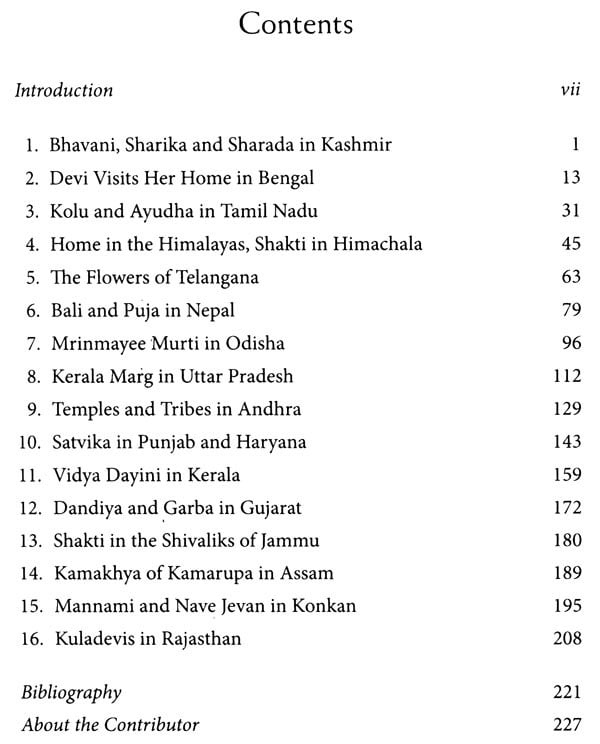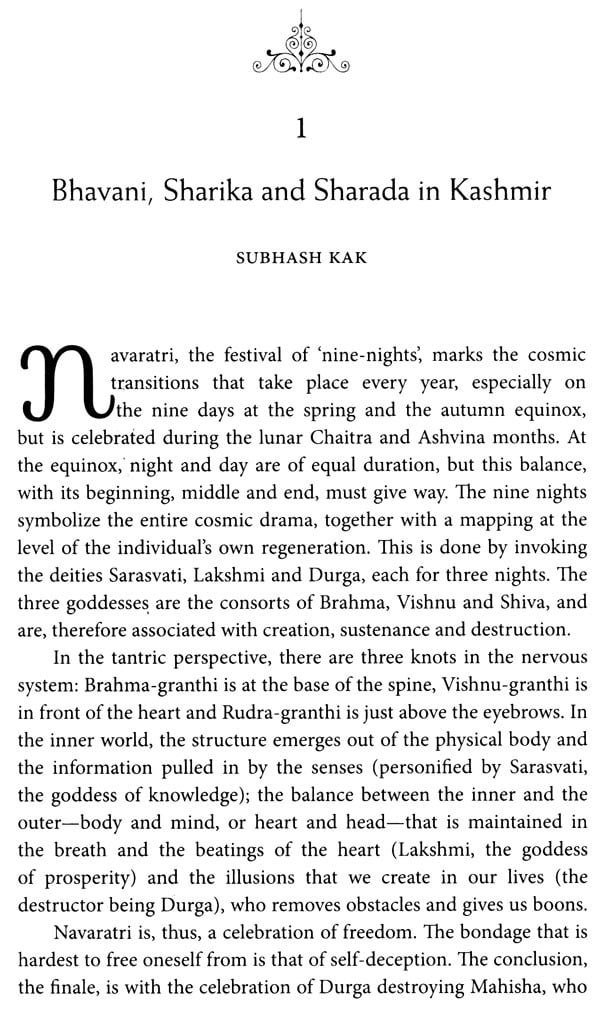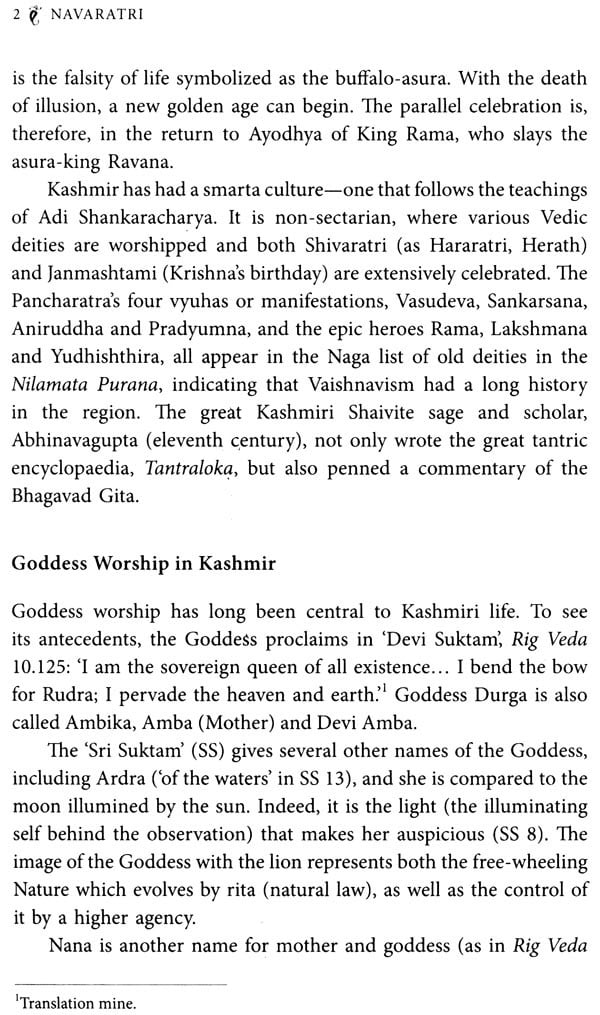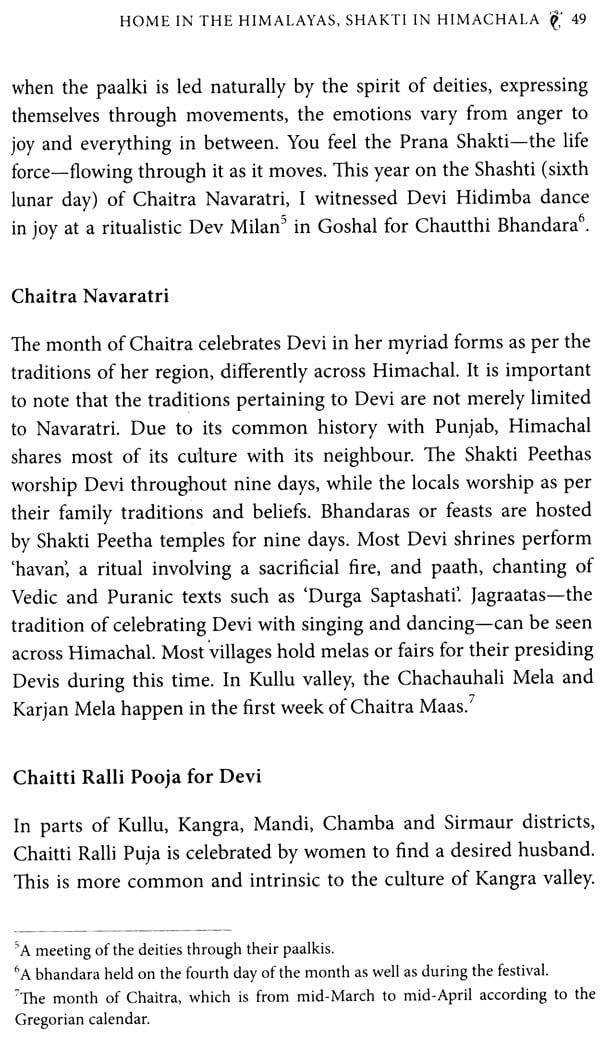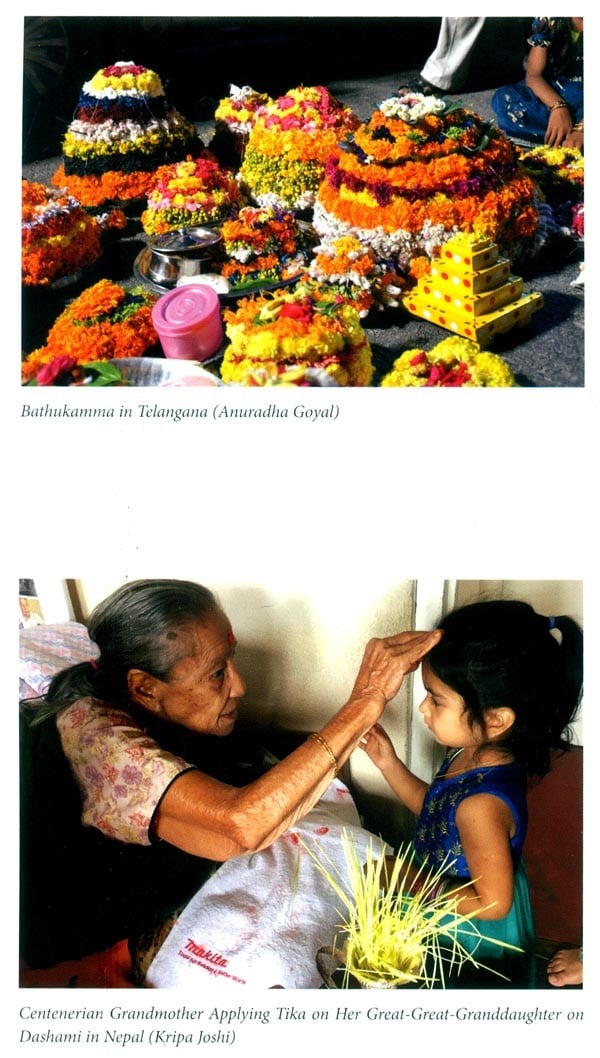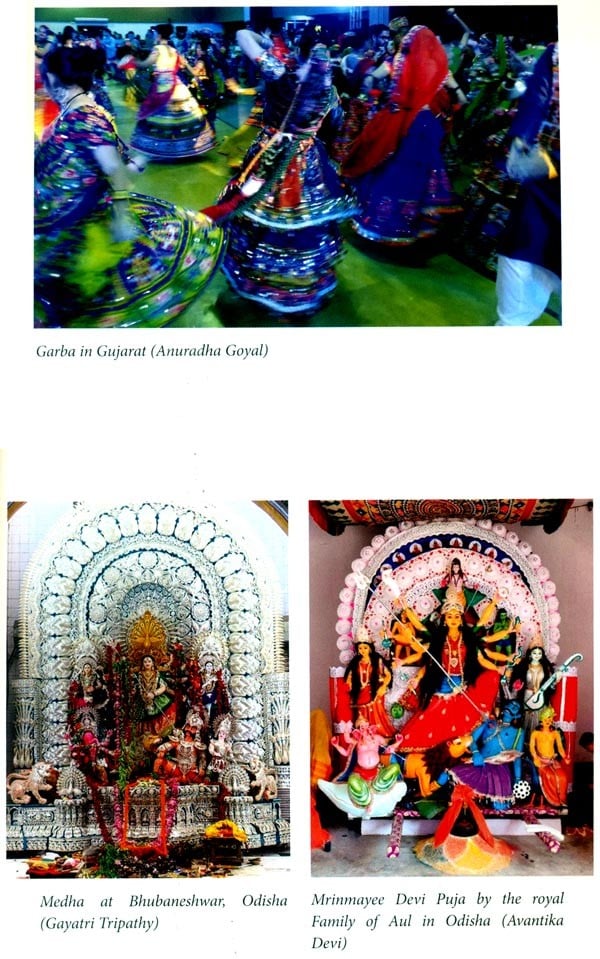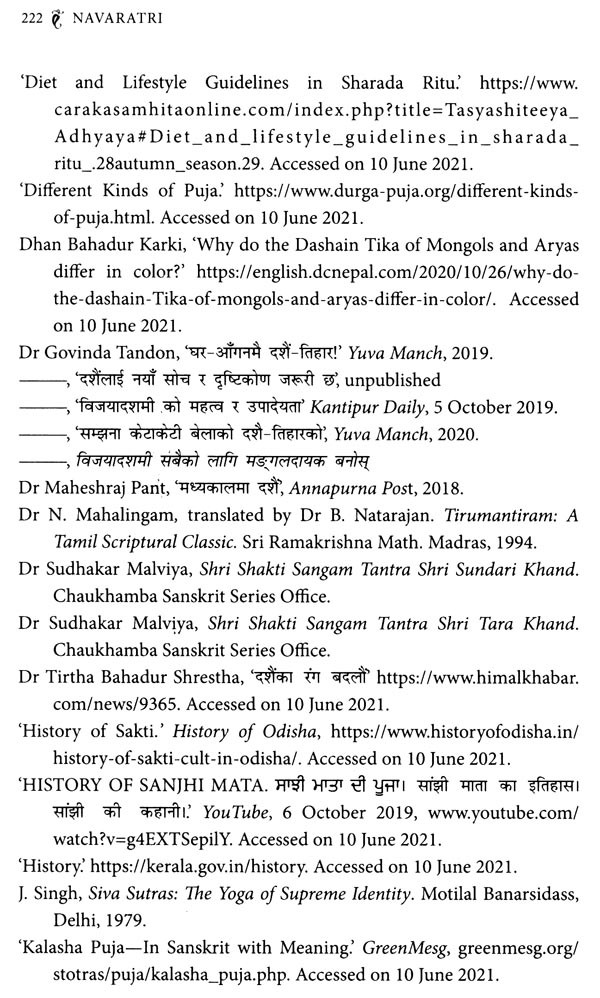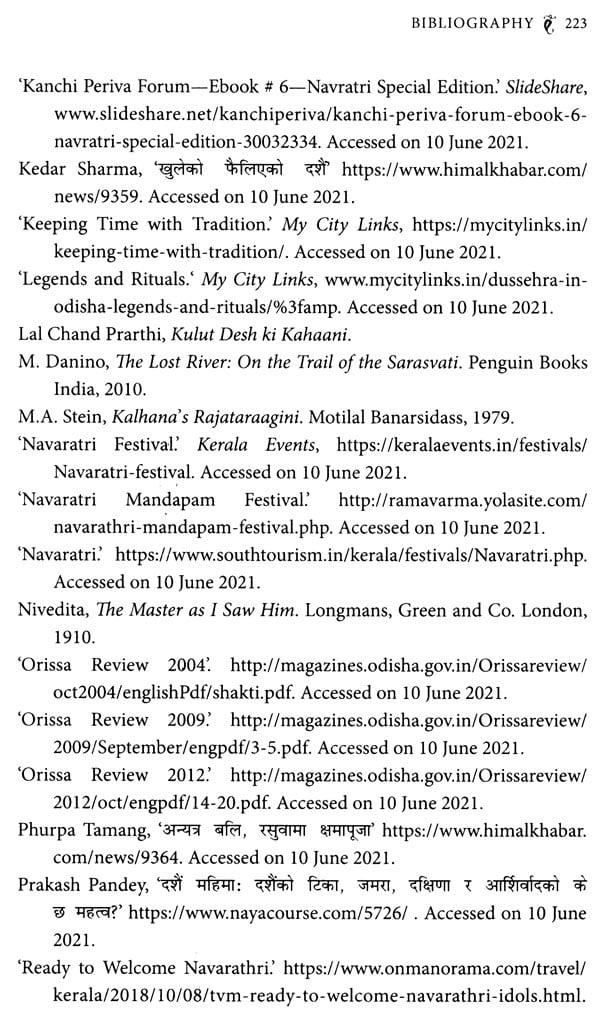
Navaratri- When Devi Comes Home
Book Specification
| Item Code: | NCZ051 |
| Author: | Bibek Debroy and Anuradha Goyal |
| Publisher: | Rupa Publication Pvt. Ltd. |
| Language: | English |
| Edition: | 2021 |
| ISBN: | 9789355200457 |
| Pages: | 250 (20 Color Illustrations) |
| Cover: | PAPERBACK |
| Other Details | 8.50 X 5.50 inches |
| Weight | 280 gm |
Book Description
Navaratri: When Devi Comes Home documents this diversity in tradition, each specific to one particular part of the country. But, taken together, they resonate with the themeya devi sarva-pradesheshu puja-rupena samsthita.
This is the first ever compilation of living customs, culture and conventions that make the canon of Devi Mahatmya and Devi Bhagavatam come alive and thrive through diverse expressions.
ANURADHA GOYAL studies the intersection of her three prime interests-business innovation, travel and Indic knowledge-by writing about them in books, blogs and columns. She is the founder of Indi Tales, a leading bi-lingual travel media portal where she documents her global travels in words, audio and video formats with a focus on ancient India. She is also the author of Lotus in the Stone: Sacred Journeys in Eternal India (2020), Unusual Temples of India (2020) and The Mouse Charmers; Digital Pioneers of India (2014), and the translator of Ayodhya Mahatmya (2021) from Skanda Purana.
In some form or other, Navaratri is celebrated throughout India, and even abroad, wherever Indians and the Hindu influence have spread. Navaratri brings to mind the visual of colorful and energetic Garba from the western coast of India and, at the same time, the warm enthusiasm of Durga Puja pandals from the eastern parts. Talk to Indians from any nook and corner of the country and they will tell you their own ways of celebrating these auspicious nine days and nights.' Like most things Indian, there is a common thread that runs across all Navaratri celebrations around India. The manifestations of expressions, though, are as varied as they can get. If we could zoom into the festivities, we would find a unique version of celebrations that is followed in each community or, perhaps, even each family. Most of us know our version of Navaratri, the way we celebrate it. Other popular versions of celebrations are more of trends that we sometimes follow and enjoy with people around us, and the not so popular versions remain undiscovered.
People sometimes say 'Navaratra' Since the word is 'ratri' in Sanskrit, and of the feminine gender, the occasion should really be called Navaratri, not Navaratra. Navaratri simply means nine nights-nine nights that are special. Festivals are decided according to the lunar day (known as tithi) and lunar month, not the solar calendar. The lunar tithi does not necessarily correspond exactly to the solar day. These nine lunar tithis are known as Pratipada, Dvitiya, Tritiya, Chaturthi, Panchami, Shashthi, Saptami, Ashtami and Navami: the first lunar day to the ninth. Of course, festivities can culminate on the following Dashami, the tenth day.
Every paksha (lunar fortnight) has this cycle of nine days and nine nights. The moon waxes during shukla paksha (the bright lunar fortnight) and wanes during krishna paksha (the dark lunar fortnight). Krishna paksha is considered to be the time of the pitris (ancestors or manes). Therefore, typically, no worship of Devas and Devis takes place during krishna paksha.' That occurs during shukla paksha. Hence, though there is a Navaratri cycle in krishna paksha too, Navaratri celebrations occur in shukla paksha, in the paksha that begins with Pratipada and ends with purnima.' Those 12 shukla paksha Navaratris every year are therefore special. Four of these are more popular than others-(l) Sharada/Ashvina Navaratri; (2) Vasanta/Chaitra Navaratri; (3) Magha Navaratri and (4) Ashada Navaratri, named after the lunar months of Ashvina (September/ October), Chaitra (March/April), Magha (January/February) and Ashada (June/July). Of these, Magha and Ashada Navaratris are known as Gupta Navaratris, the word 'gupta' meaning hidden or secret. Therefore, Devi is worshipped during these two Navaratris, respectively in winter and during the monsoon, but that worship is not openly done. That leaves Ashvina Navaratri and Chaitra Navaratri, corresponding to autumn and spring.
Book's Contents and Sample Pages
